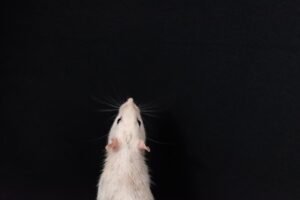Parrotfish are a diverse group of marine fish found in tropical and subtropical oceans worldwide. There are over 90 species of parrotfish, inhabiting various environments such as coral reefs, rocky shores, and seagrass beds. These fish are known for their distinctive beak-like mouths and vibrant colors, which can change as they mature.
Parrotfish play a crucial role in coral reef ecosystems. As herbivores, they primarily feed on algae and other plant material. Their strong jaws and beak-like mouths allow them to scrape algae off rocks and coral, and even consume pieces of coral.
This feeding behavior helps maintain the health of coral reefs by preventing algal overgrowth, which can be detrimental to coral growth. One interesting characteristic of some parrotfish species is their ability to change gender as they age, typically starting as females and later transforming into males. This phenomenon, known as sequential hermaphroditism, is relatively common among certain fish species.
Parrotfish are also economically important, as they are sought after by fishermen for their flavorful meat and attractive appearance. However, overfishing can potentially impact their populations and, consequently, the health of coral reef ecosystems.
Key Takeaways
- Parrot fish are fascinating creatures that play a crucial role in coral reef ecosystems.
- The dazzling colors of parrot fish make them a sight to behold while snorkeling or diving.
- Parrot fish exhibit unique behaviors such as their ability to change gender and their use of coral as a food source.
- Parrot fish are important for maintaining the health of coral reefs through their grazing habits.
- Threats to parrot fish populations include overfishing, habitat destruction, and climate change.
- Conservation efforts for parrot fish include marine protected areas and sustainable fishing practices.
- When snorkeling or diving, look for parrot fish near coral reefs, where they can be seen grazing on algae and swimming in small groups.
The Dazzling Colors of Parrot Fish
Vibrant Colors and Iridescent Scales
One of the most striking features of parrot fish is their vibrant and dazzling colors. These fish come in a wide range of colors, including bright blues, greens, purples, and yellows. Their scales are often iridescent, meaning they can appear to change color depending on the angle of the light.
Colors with a Purpose
The vibrant colors of parrot fish serve a variety of purposes. For one, they help to attract mates and establish dominance within the social hierarchy of the fish’s group. The bright colors also serve as a form of camouflage, helping the fish to blend in with the colorful coral reef environment. This can help to protect them from predators, as well as make it easier for them to sneak up on their prey.
Color Changes and Maturation
The ability of parrot fish to change colors as they mature is also a fascinating aspect of their biology. Some species start out with duller colors as juveniles and then develop more vibrant hues as they reach adulthood. This color change is often accompanied by changes in behavior, such as transitioning from a primarily herbivorous diet to a more omnivorous one.
The Unique Behaviors of Parrot Fish

Parrot fish are known for their unique behaviors, which set them apart from other species of fish. One of the most distinctive behaviors of parrot fish is their ability to produce a mucus cocoon around themselves at night. This cocoon helps to protect them from predators while they sleep, as well as from parasites and other threats.
The mucus cocoon also serves as a form of camouflage, helping the fish to blend in with their surroundings and avoid detection. Another interesting behavior of parrot fish is their ability to change gender as they mature. Many species of parrot fish start out as females and later transition into males as they grow older.
This gender change is often triggered by changes in social dynamics within the group, such as the loss of a dominant male or the presence of an abundance of females. This unique reproductive strategy helps to ensure that there are always enough males available to fertilize the eggs of the females, which is important for maintaining healthy populations of parrot fish.
The Importance of Parrot Fish in Coral Reefs
| Metrics | Data |
|---|---|
| Parrot Fish Species | Over 80 species |
| Feeding Habits | Algae grazers |
| Impact on Coral Reefs | Prevent algae overgrowth, promote coral growth |
| Biodiversity | Support diverse marine life |
| Conservation Status | Vulnerable due to overfishing and habitat destruction |
Parrot fish play a crucial role in maintaining the health and balance of coral reef ecosystems. As herbivores, they help to keep the reef free from algae overgrowth by grazing on algae and dead coral. This prevents the algae from smothering the coral and allows new coral to grow, helping to maintain the overall health and diversity of the reef.
In addition, the feeding behavior of parrot fish helps to create small particles of sand by grinding up coral with their powerful jaws. This sand is then excreted by the fish, contributing to the formation of new beaches and islands. The presence of parrot fish also has a positive impact on the overall biodiversity of coral reefs.
By keeping algae levels in check, parrot fish create more space for other species of fish and invertebrates to thrive. This helps to maintain a healthy balance within the ecosystem and ensures that there are enough resources available for all species to survive. In this way, parrot fish act as important ecosystem engineers, shaping the physical structure and biological diversity of coral reefs.
Threats to Parrot Fish Populations
Despite their importance in coral reef ecosystems, parrot fish populations are facing a number of threats that are putting them at risk. One of the biggest threats to parrot fish is overfishing, as they are targeted by commercial and recreational fishermen for their tasty flesh and vibrant colors. Overfishing can lead to declines in parrot fish populations, which can have negative effects on the health and diversity of coral reefs.
Habitat destruction is another major threat to parrot fish populations. Coral reefs are under threat from a variety of human activities, including coastal development, pollution, and climate change. These activities can lead to the degradation and loss of coral reef habitats, which can have serious consequences for parrot fish and other reef-dwelling species.
Conservation Efforts for Parrot Fish

Establishing Marine Protected Areas
In response to the threats facing parrot fish populations and their coral reef habitats, conservation efforts have been put in place to protect these vital ecosystems. One key strategy is the establishment of marine protected areas (MPAs) where fishing is restricted or prohibited. These protected areas provide a safe haven for parrot fish and other reef-dwelling species, allowing their populations to recover and thrive.
Raising Awareness and Building Support
Another crucial conservation effort is raising awareness about the importance of parrot fish and coral reefs among local communities and tourists. By educating people about the value of these ecosystems and the threats they face, conservation organizations can help build support for efforts to protect them.
Protecting Parrot Fish and Their Habitats
Through a combination of these conservation efforts, it is possible to protect parrot fish populations and their coral reef habitats. By providing a safe environment for these species to thrive, we can help maintain the delicate balance of these ecosystems and preserve their beauty for future generations.
How to Spot Parrot Fish While Snorkeling or Diving
If you’re interested in seeing parrot fish in their natural habitat, there are a few tips you can follow to increase your chances of spotting them while snorkeling or diving. Look for areas with healthy coral reefs, as these are likely to be home to a diverse range of reef-dwelling species, including parrot fish. Keep an eye out for areas with plenty of algae growth, as this is a sign that there may be parrot fish nearby grazing on the algae.
When snorkeling or diving, try to move slowly and quietly so as not to startle the fish. Look for areas where parrot fish are likely to be feeding or resting, such as around rocks or coral formations. Keep an eye out for flashes of vibrant color or movement, as this could indicate the presence of parrot fish nearby.
In conclusion, parrot fish are a fascinating and important species that play a crucial role in maintaining the health and diversity of coral reef ecosystems. By understanding their behaviors, threats, and conservation efforts, we can work towards protecting these beautiful creatures and the habitats they depend on for future generations to enjoy.
If you’re interested in learning about trailblazing women, you should check out the article about Claudine Gay, a trailblazer in academia and beyond. (source) Her story is inspiring and showcases the impact that women can have in various fields.
FAQs
What is a parrot fisher?
A parrot fisher is a person who catches parrotfish, a type of colorful marine fish found in tropical and subtropical waters.
What does a parrot fisher do?
A parrot fisher catches parrotfish using various fishing methods such as spearfishing, net fishing, or hook and line fishing.
Where do parrot fishers operate?
Parrot fishers operate in tropical and subtropical waters where parrotfish are commonly found, such as the Caribbean, Pacific, and Indian Oceans.
Is parrot fishing sustainable?
Parrot fishing can be sustainable if managed properly. Overfishing and destructive fishing practices can threaten parrotfish populations and the health of coral reef ecosystems.
Are there regulations for parrot fishing?
Many countries have regulations and restrictions in place to manage parrotfish fisheries, including size limits, catch limits, and protected areas where fishing is prohibited.
What are the threats to parrotfish populations?
Threats to parrotfish populations include overfishing, habitat destruction, pollution, and climate change. These threats can impact the health of coral reefs and the overall marine ecosystem.




















+ There are no comments
Add yours